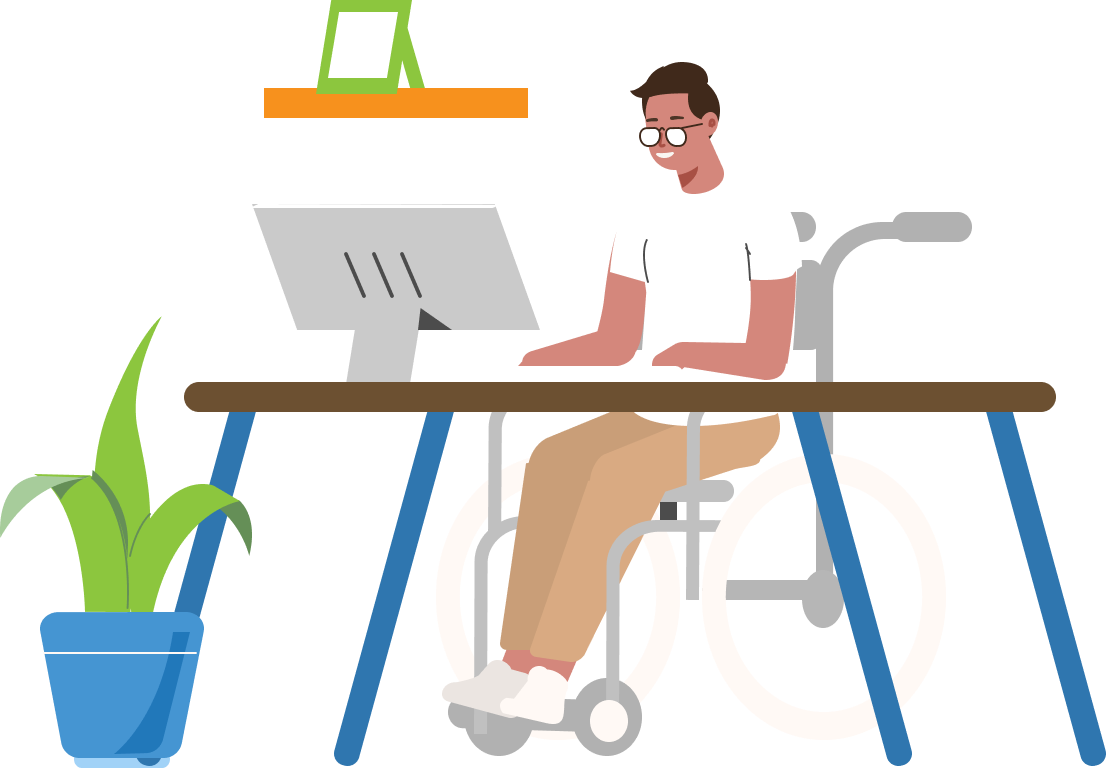
Food Service & Hospitality Accessibility Solutions
Create accessible and inclusive guest experiences with UsableNet’s expert accessibility solutions. From online ordering to booking, we ensure all customers can connect with your brand effortlessly.
Test the accessibility of your website for free! Try UsableNet AQA. Test now!

Create accessible and inclusive guest experiences with UsableNet’s expert accessibility solutions. From online ordering to booking, we ensure all customers can connect with your brand effortlessly.






Every interaction matters—whether guests are viewing your menu, booking a room, or placing an order.
Accessibility ensures a seamless experience for everyone, including 1 in 6 people worldwide with a disability, building trust, loyalty, and satisfaction.
Compliance with the Americans with Disabilities Act (ADA), European Accessibility Act (EAA), and other accessibility laws is essential in today’s digital world. More than meeting standards, accessibility helps you deliver an exceptional customer experience and stand out as a brand that welcomes everyone.
An accessible website and mobile app can mean the difference between a guest choosing your business or moving on. Prioritizing digital accessibility ensures your business grows while serving every customer equally.
.png)
Discover how Skyscanner partnered with UsableNet to prioritize digital accessibility and enhance its global brand reputation. By integrating accessibility into its strategy, Skyscanner achieved:
- Improved user experience for travelers of all abilities.
- Enhanced compliance with global accessibility standards, including WCAG and the European Accessibility Act.
- Strengthened brand trust and loyalty through inclusive design.
Skyscanner’s success shows how investing in accessibility meets compliance requirements and drives meaningful engagement and global reach.
UsableNet is a trusted accessibility partner for restaurants and hospitality brands, delivering tailored solutions and measurable results.
With 25+ years of experience, we’ve helped hospitality and restaurant brands ensure accessibility across websites, mobile apps, and booking systems.
We combine manual audits, automated tools, and feedback from people with disabilities to meet ADA, WCAG 2.2, and the European Accessibility Act standards.
Stay on track with regular updates, monthly check-ins, and quarterly reviews to ensure progress and transparency.
Accessibility improves guest satisfaction, builds brand loyalty, and helps you reach new audiences, driving tangible business growth.
Online restaurant accessibility means guests with disabilities can use your restaurant website and app to view menus, place orders, reserve tables, and pay. It involves proper labels, keyboard and screen reader navigation, clear focus order, and error messages that explain how to fix issues—aligned to WCAG 2.2..
Use QR menu accessibility basics: provide HTML or tagged PDF menus (not images of text), clear headings, readable contrast, proper table markup for prices/options, and alt text for images. Ensure zoom works on mobile and that links/buttons are keyboard and screen-reader operable.
Read user-insights in our blog post, "Designing an Accessible Digital Menu for Your Restaurant."
Accessible reservations require labeled date pickers, time slots, guest counters, and buttons. Avoid CAPTCHA roadblocks or offer an accessible alternative. Keep focus visible, prevent focus traps in modals, and announce errors inline so guests know what to fix.
Read first-hand guest insights, Navigating Mobile Accessibility: A Restaurant Reservation Story
Focus on mobile app accessibility patterns: adequate target size for touch, consistent labels for add-to-cart and modifiers, predictable focus order after actions, and announcements for totals, discounts, and status (e.g., “order placed”). Support VoiceOver/TalkBack gestures and device font scaling.
Read more insights: Restaurant App Accessibility: A Screen Reader Experience When Menus Won’t Scroll
Yes. Kiosk accessibility includes tactile controls or accessible touchscreen targets, audio output with headphone support, operable controls without timeouts, and clear on-screen focus. Provide equivalent options if a kiosk is temporarily unusable.
Read the blog, 3 things a blind diner wishes restaurants knew about digital accessibility
If you publish them online, use accessible PDFs: real text (not images), tagged headings/lists/tables, correct reading and tab order, described images, and labeled links and form fields. Offer an HTML alternative when possible for faster updates.
Read more, Ordering Dinner from a Resort Restaurant as a Blind Guest.
For online restaurant accessibility, emphasize: focus visibility (so guests don’t “lose” their place), target size for touch, consistent help and error prevention at checkout, and accessible authentication if accounts or loyalty sign-ins are required.
Discover more about WCAG 2.2 conformance in an on-demand webinar for designers and developers.
EN 301 549 references WCAG for web and apps. The EAA extends accessibility requirements across member states. Mapping ordering, reservations, and payment flows to WCAG helps demonstrate conformity for multinational brands.
Get your EAA questions answered in this on-demand session, The European Accessibility Act in Action: Practical Strategies for Compliance

Accessibility is a journey, and UsableNet is here to support you every step of the way. Whether you need fully managed services or tools to empower your team, we're ready to help make your e-commerce site accessible, compliant, and inclusive.